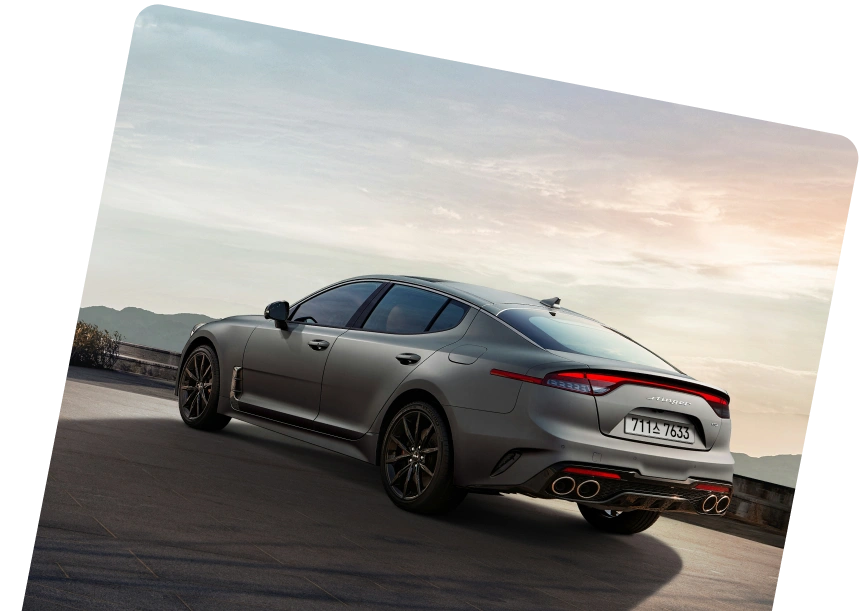This might seem easy: for a smaller, more budget-friendly saloon in Tesla’s brand lineup, you go for the Tesla Model 3; for a larger and more costly option, it’s the Tesla Model S.
But is it really that simple, especially when looking at the used market for EVs, where top-tier Model 3 and mid-level Model S cars are priced similarly? Where should your money go? To answer this, we’ve compiled this guide, setting out the main differences so you can choose the best luxury EV for you.
Performance

Tesla Model 3
The rear-wheel-wheel-drive Tesla Model 3 accelerates from 0 to 60 mph in 5.8 seconds and reaches a maximum speed of 140 mph. It’s powered by a single electric motor that produces 242 bhp.
The Model 3 Long Range has an extra motor for all-wheel drive, which increases its power to 346 bhp. This model can accelerate from 0 to 60 mph in 4.2 seconds and reach a top speed of 145 mph. The Model 3 Performance has two motors and over 460 bhp, which account for its 0-to-60 time of just 2.9 seconds and a top speed of 163 mph.

Tesla Model S
Now, the standard dual-motor Tesla Model S can go from 0 to 60 mph in just 3.1 seconds and reach a top speed of 155 mph. With 661 bhp, it’s fast enough to easily beat most supercars off the line.
For even more speed, the Plaid version is the ultimate choice. It has three motors producing 1,006 bhp and 1,420 Nm of torque. This allows it to go from 0 to 60 mph in 1.99 seconds and achieve 200 mph. The Tesla Model S Plaid is especially impressive on the motorway, where it passes other cars with ease.
Price
The Tesla Model 3 base model starts at around £39,990. If you opt for higher trims or performance upgrades, like the Model 3 Performance Ludicrous, the price can go up to about £59,990.
The starting price for the Tesla Model S is approximately £78,990 for the Long Range version with all-wheel drive. If you choose higher-performance versions or add extra features, the cost can exceed £91,990.
Both Tesla models are available used for about £23,000. However, with the Tesla Model S, you get a lot more driving performance than with the Model 3. Looking at the two EVs, it’s clear that the Tesla Model 3 is priced for a broader market with more affordable options. The Model S is a higher-end model with a premium price tag.
Styling
The Tesla Model 3 is now common on UK roads, but its unique grille-less front was quite striking when it first came out. From the side, you can see how the electric car design benefits the aesthetic. The wheels are pushed to the corners, and it creates more room inside than you’d get with a similar-sized petrol car. The standard full-length glass roof also makes the cabin feel more spacious.
The Tesla Model S, although older, still looks fresh. It got updates in 2016 and 2021 that kept its design modern. The Model S is a larger car and is also more imposing, which makes it feel less manoeuvrable in tight spaces but gives it a strong presence.
Driving
Driving the Tesla Model 3 and Tesla Model S is similar in many ways. The two cars offer quick acceleration and solid traction. They don’t handle like a sports car but have a low centre of gravity that keeps them stable in corners.
The Tesla Model 3 feels sharper and more agile, thanks to its quicker steering and smaller size. Considering these two factors, it’s better for navigating tight streets.
The Tesla Model S, on the other hand, feels bigger and is trickier to drive in crowded areas. It’s more comfortable on the road thanks to its smoother ride and slower steering. The Model S Plaid, however, has extremely fast acceleration, so it may be more of a challenge to drive at normal speeds.
Interior

Tesla Model 3
Inside any Tesla, you’ll find a sleek, minimalistic design. Both the Model 3 and Model S feature a large central touchscreen that controls almost everything in the car. This keeps the interior clean but means you use the screen for tasks like opening the glovebox and adjusting the climate. This streamlined approach is sometimes frustrating because you have to navigate menus on the digital dashboard with no physical buttons.

Tesla Model S
The Tesla Model S also includes an extra screen in front of the driver with important information, such as the speed and battery level.
Both models offer similar interior features, including heated and ventilated seats, entertainment systems, and rear screens. The main difference is that the Tesla Model S has slightly larger screens and some extra premium features.
Technology
Both models are packed with impressive technology. They offer features like Dog Mode to keep your pet comfortable, Netflix for in-car entertainment, a karaoke system, and Sentry Mode. The latter uses exterior cameras to monitor for potential theft or hit-and-runs.
The Tesla Model S is considered one of the most advanced cars on the road today. The latest edition comes with improved self-driving technology. It now has new hardware and software, including a powerful Nvidia machine learning system, eight cameras, 12 ultrasonic sensors, and a forward-facing radar. The updated software keeps the car’s semi-autonomous driving at a maximum of 45 miles per hour and slows down if it detects your hands aren’t on the steering wheel.
Boot space and practicality
The Tesla Model 3 is smaller, with a 425-litre boot and enough room in the front and back seats. However, taller passengers will find the rear seats a bit cramped due to the lower roofline and limited legroom.
The Tesla Model S, in contrast, is much more spacious. It features a 745-litre boot and offers up to 1,739 litres of cargo space when the rear seats are folded down. This makes it much roomier compared to the Tesla Model 3, similar to the space found in a BMW 5 Series, rather than the 3 Series-like space of the Model 3.
Safety and reliability
The Tesla Model S, tested by NHTSA in 2013, earned a five-star rating in all categories. The Tesla Model 3 also received a five-star rating from NHTSA. Both vehicles scored well in IIHS crash tests, but the Model S had some minor issues with headlight performance and LATCH anchor ease of use.
As for Tesla’s reliability, it has had its ups and downs. They’ve faced issues such as uneven panel gaps and electrical problems. While recent models have improved, and Tesla can fix some issues with over-the-air updates, repairs are still expensive due to the many sensors in their cars.
Running costs
The Tesla Model 3 tends to be more cost-effective, especially for company-car users, due to lower Benefit-in-Kind taxes and better efficiency. It’s easier to find and generally cheaper to maintain, with replacement parts more readily available.
The Tesla Model S, while more expensive, holds its value better over time, particularly if purchased used. Charging costs vary a lot based on where you charge and your electricity tariff. Tesla’s excellent Supercharger network is a plus for long road trips.
Both models come with a standard manufacturer warranty of four years or 50,000 miles, and the batteries are covered for eight years, with the Tesla Model S offering unlimited mileage.
Range
The Tesla Model S goes up to 405 miles on a single charge, and even the high-performance Plaid version manages up to 396 miles. The Tesla Model 3 offers a range of up to 333 miles in the Long Range model, 315 miles in the Performance trim, and 272 miles in the base version.
Please bear in mind that official estimates for electric vehicles are a bit optimistic because they combine city and motorway driving. At motorway speeds, there’s more air resistance, so the car requires more energy to maintain velocity.
When it comes to efficiency, the Tesla Model 3 has an edge over the Tesla Model S, offering about 0.5 to 0.7 more miles per kilowatt-hour across similar versions. A used Model 3 Long Range AWD, for example, is rated at approximately 4.0 to 4.2 miles per kWh, with the RWD version slightly higher at 4.2 to 4.4 miles per kWh. Meanwhile, the Model S delivers around 3.5 to 3.8 miles per kWh.
Dimensions
The Tesla Model S is larger than the Tesla Model 3 by two size classes, but when it comes to passenger space, they’re quite similar.
Tesla Model 3

- Length: 4,694 mm
- Width: 1,850 mm
- Height: 1,443 mm
- Legroom front/rear: 1,085 mm / 876 mm
Tesla Model S

- Length: 4,970 mm
- Width: 1,964 mm
- Height: 1,445 mm
- Legroom front/rear: 1,077 mm / 902 mm
Who is the Tesla Model 3 for?
Opt for the Tesla Model 3 if you:
- Have a moderate budget;
- Desire swift acceleration without needing the absolute highest performance;
- Favour a smaller vehicle.
The Tesla Model 3 is well-suited for urban living. It’s compact enough to manoeuvre and park easily, yet it offers a lot of interior space. It’s also well-equipped to handle rough city streets and is convenient to charge. Finally, it comes at a lower price point compared to the larger, more powerful Model S.
Who is the Tesla Model S for?
Consider the Tesla Model S if you:
- Need the longest driving range available;
- Want the most powerful and fastest Tesla;
- Value the practicality of a hatchback with foldable seats.
The Tesla Model S is a great choice if you have a larger family or seek an exceptionally fast car. Bear in mind that you won’t get the same thrill as a true sports car, but the acceleration in the Model S is still very impressive and will leave you amazed.
Final words: Tesla Model S vs. Model 3? Your best option
If you’re budget-conscious, the Tesla Model 3 is your best choice. It delivers great performance, range, space, and tech at an affordable price, and it’s easier to find and maintain than the Tesla Model S.
The Tesla Model S, however, offers extra luxury with more rear passenger space and a larger battery for a longer range. It also has a driver’s screen positioned directly in front of you, which many find more convenient. For top-speed enthusiasts, the Tesla Model S Plaid is the way to go, with its impressive 1,000 horsepower. It’s absolutely not necessary for everyday driving, but it’s a thrilling option if you can afford it.
Overall, both cars are quick, fun, and stylish, so you can’t go wrong with either.







